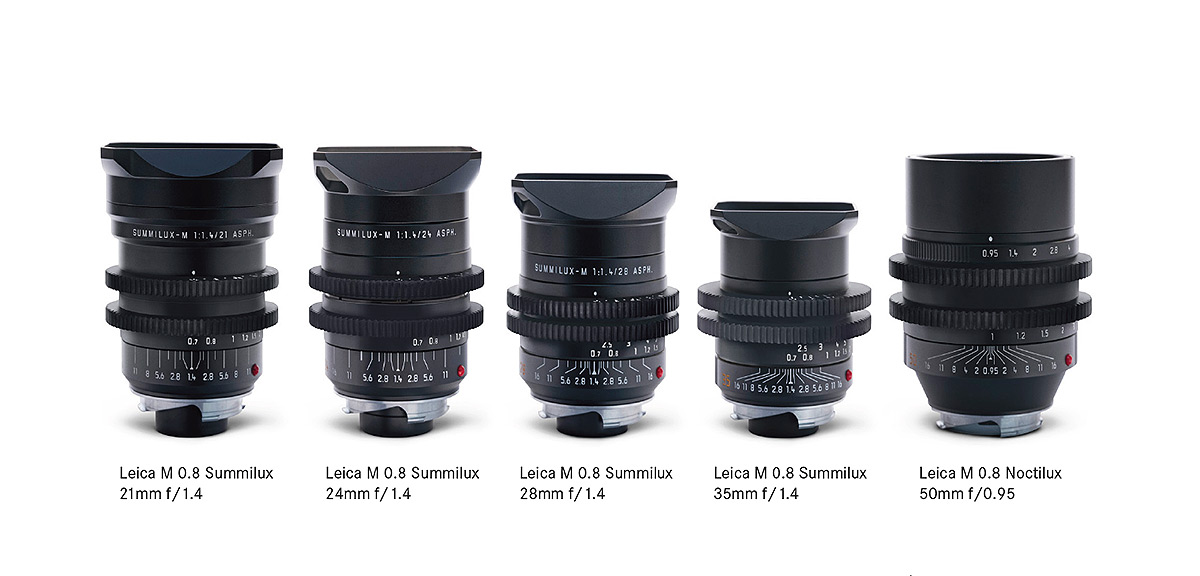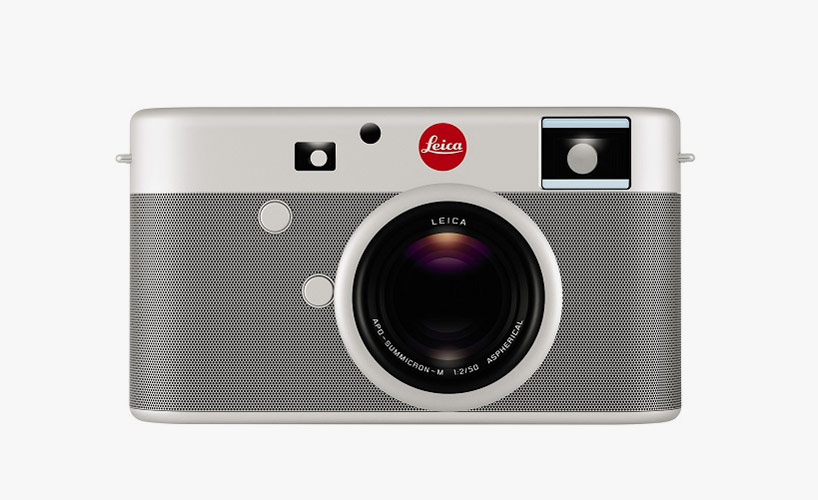Leica Camera lenses are the finest optics on earth, and Leica Camera strives to create the best and innovate in the field of photography. Leica M lenses are compact, light and fast. That’s what makes them costly. But they’re made to last a lifetime – or longer. So, let’s pick the right one:
The Leica M Camera Rangefinder Principle
Because the Leica M camera does not show the photographer precisely what the lens 'sees', the choice of focal length (the angle of view* of the lens) is paramount.
How the Leica M-A got its spots. To start at the beginning, there are several features of the Leica M-A that were first seen on the M3. The all metal film advance, the knurled metal rewind nob with the two little red dots on top (seen in the later M3s) and the metal surround to the lens release button. (2013 LEICA M typ 240, 1987 LEICA SUMMICRON-M 50mm f/2, Auto ISO 3,200, 1/45 at f/2, auto white balance.) bigger or camera-original JPG. Bad The electronic finder is the main difference between the M typ 240 and the M9 other than the quieter shutter, but the EVF isn't very good and is made in China out of plastic, which is clearly unacceptable. In 2020/2021, the Leica M8 is the cheapest digital Leica M you can buy. Only on the used market of course! But the prices are trending at $1000-1600 USD. There has been a lot of debate over the years over the merits of the CCD vs CMOS sensor and I’m not the one to end that argument.
- Leica M Monochrom (Typ 246), Nr. 497xxxx, complete in box with one-year warranty, Olympus EVF and Leica Protector (14886), Ex $3,750 Leica M8,2 Black Paint, Nr. 355xxxx, complete in box with 2 batteries, Handgrip-M and 9-month warranty, Ex $2,450.
- Leica Summilux M lenses are relatively low-cost lenses, with a maximum aperture of f/2.4. These are particularly light, and they're available in fixed focal lengths between 35mm and 90mm. The best lenses in terms of optical quality and performance are the Leica Summicron M lenses, which boast a maximum aperture of f/2.
* For the purposes of this article, the terms 'angle of view' and “focal length” are synonymous.
The Leica M camera viewfinder is simply a window that the photographer must use to compose the image.* Since the viewfinder is only a simple window, the Leica M camera superimposes frame-lines of various focal lengths into that window. The photographer frames his or her image using these frame-lines, which give an approximation of what the lens will capture. Just look at the front of a Leica M camera and you can plainly see that the large viewfinder window at top left is not in line at all with the actual lens – where the photo is made. This can be vexing for some photographers, but you get used to it. (More on this in our upcoming article on The Leica Rangefinder.) So, when looking through the viewfinder/rangefinder of the Leica M camera – and considering the frame-lines there – what you will get when you make the photograph is actually going to be lower and to the right of the frame-lines you see in the viewfinder. You get used to it, and the viewfinder/rangefinder of the Leica M camera is stunningly accurate. But this article is about lenses.
* Leica M digital camera viewfinders are 68% of actual size. Most film M cameras 72% of actual size. The Leica M3 remains extremely popular due to its 93% of life-size viewfinder magnification. With the M6 model, Leica began to manufacture viewfinder with 58% and 85% of life-size viewfinder magnification, which each have their own practical applications.
Why Leica M Lenses*
'Do you want the job done cheap, fast or good?' a friend is fond of asking his clientele. This maxim holds true for much in life, I think. Leica M lenses are the smallest, fastest and finest photographic lenses in the world. Each Leica lens is a little jewel in and of itself. They stand the test of time – visit your Leica dealer and see how well a properly maintained vintage Leica M lens performs. New Leica lenses do not come cheap. And, as it happens, they are not made particularly quickly, either. Leica takes their time manufacturing lenses, which is precisely how they make the very best. And they are not just good, but fantastic. Ever heard anyone say they don’t like their new Leica M lens?
* For the purpose of this article and simplicity’s sake, we are treating onlyLeica M lenses – not screw-mount or Visoflex or other-manufacturers’ screw-mount or M-bayonet-mount lenses. Many screw-mount lenses of all sorts work wonderfully on Leica M cameras – both analogue and digital M cameras. Contact us to learn more.
What Does It All Mean (or, Why do Leica people use all these strange words) ?!
A little background: photographic lenses are described in both number of focal length millimeters (“mm”), and in their “f-number,” or “f-stop.” The term “f-stop” and “aperture” are synonymous.
Leica M Monochrom


The idea of the f-stop was first described for photography in 1867 and has become a worldwide standard; it is the ratio of the focal length of the lens to the diameter of the entrance optics (front lens element or assembly). But what’s really important to understand is that the lower the f-stop – or aperture – number (f2,8 versus f4, for example), the more light the lens can capture, all else being equal. This is usually described as how “fast” a lens is, relative to other lenses.
Leica Camera lenses are the finest optics on earth, and Leica Camera strives to create the best and innovate in the field of photography. Leica M lenses are compact, light and fast. That’s what makes them costly. But they’re made to last a lifetime – or longer. So, let’s pick the right one:
The Leica M Camera Rangefinder Principle

Because the Leica M camera does not show the photographer precisely what the lens 'sees', the choice of focal length (the angle of view* of the lens) is paramount.

* For the purposes of this article, the terms 'angle of view' and “focal length” are synonymous.
The Leica M camera viewfinder is simply a window that the photographer must use to compose the image.* Since the viewfinder is only a simple window, the Leica M camera superimposes frame-lines of various focal lengths into that window. The photographer frames his or her image using these frame-lines, which give an approximation of what the lens will capture. Just look at the front of a Leica M camera and you can plainly see that the large viewfinder window at top left is not in line at all with the actual lens – where the photo is made. This can be vexing for some photographers, but you get used to it. (More on this in our upcoming article on The Leica Rangefinder.) So, when looking through the viewfinder/rangefinder of the Leica M camera – and considering the frame-lines there – what you will get when you make the photograph is actually going to be lower and to the right of the frame-lines you see in the viewfinder. You get used to it, and the viewfinder/rangefinder of the Leica M camera is stunningly accurate. But this article is about lenses.
* Leica M digital camera viewfinders are 68% of actual size. Most film M cameras 72% of actual size. The Leica M3 remains extremely popular due to its 93% of life-size viewfinder magnification. With the M6 model, Leica began to manufacture viewfinder with 58% and 85% of life-size viewfinder magnification, which each have their own practical applications.
Leica M3
Why Leica M Lenses*
Leica M-e (typ 240)
'Do you want the job done cheap, fast or good?' a friend is fond of asking his clientele. This maxim holds true for much in life, I think. Leica M lenses are the smallest, fastest and finest photographic lenses in the world. Each Leica lens is a little jewel in and of itself. They stand the test of time – visit your Leica dealer and see how well a properly maintained vintage Leica M lens performs. New Leica lenses do not come cheap. And, as it happens, they are not made particularly quickly, either. Leica takes their time manufacturing lenses, which is precisely how they make the very best. And they are not just good, but fantastic. Ever heard anyone say they don’t like their new Leica M lens?
* For the purpose of this article and simplicity’s sake, we are treating onlyLeica M lenses – not screw-mount or Visoflex or other-manufacturers’ screw-mount or M-bayonet-mount lenses. Many screw-mount lenses of all sorts work wonderfully on Leica M cameras – both analogue and digital M cameras. Contact us to learn more.

What Does It All Mean (or, Why do Leica people use all these strange words) ?!
A little background: photographic lenses are described in both number of focal length millimeters (“mm”), and in their “f-number,” or “f-stop.” The term “f-stop” and “aperture” are synonymous.
The idea of the f-stop was first described for photography in 1867 and has become a worldwide standard; it is the ratio of the focal length of the lens to the diameter of the entrance optics (front lens element or assembly). But what’s really important to understand is that the lower the f-stop – or aperture – number (f2,8 versus f4, for example), the more light the lens can capture, all else being equal. This is usually described as how “fast” a lens is, relative to other lenses.